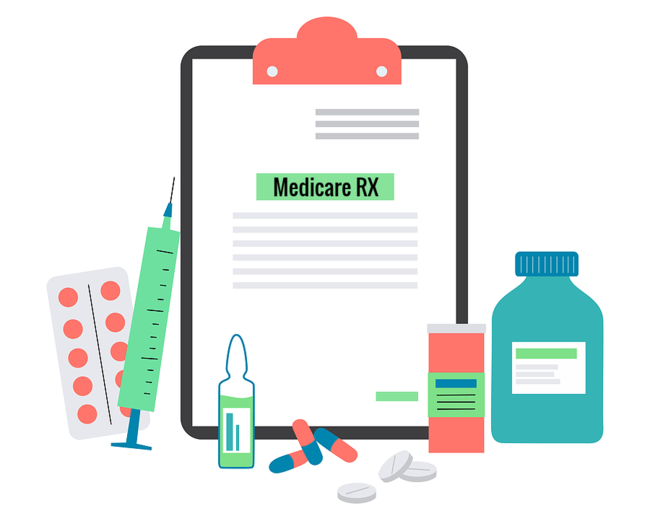Most people know when they sign up for Medicare that they need Part D to cover their prescription drugs. You can add a stand-alone Part D plan to original Medicare A and B, or you can sign up for a Part C Medicare Advantage plan that includes Part D. But there are some drugs that are not covered under the Part D portion of your benefits. Some medications are covered under Medicare Part A and Part B. Here’s what you need to know.
Medicare Part D Drugs
Part D covers most outpatient prescription drugs that are filled at a pharmacy. Your cost is determined by your insurance carrier’s drug formulary. The formulary determines what tier each drug is on and your subsequent out of pocket cost, usually a copay or coinsurance. Some Medicare Advantage plans also cover over the counter drugs like vitamins, pain relievers and cold medicine.
Medicare puts a limit on the dollar amount they will cover for Part D prescription medications each year. Those who exceed that limit ($4,660 in 2023) enter the coverage gap also known as the “donut hole”. Not everyone enters the coverage gap, but for those who do, it can be costly.
Medicare Part A Drugs
Medicare Part A, also known as hospital insurance, covers care received in a hospital, skilled nursing facility or hospice care. Any prescription medications administered in these settings is covered under Part A.
Medicare Part B Drugs
Part B covers select drugs that are administered by a healthcare professional in a doctor’s office or other outpatient setting. This includes some injectable drugs, vaccinations, and infusion therapy.
Some examples of Part B drugs:
- Chemotherapy drugs administered intravenously or orally
- Vaccines such as the seasonal flu shot and pneumococcal vaccine
- Injectable osteoporosis drugs used to treat women with osteoporosis
- Blood clotting factors given by injection for hemophilia
- Injectable and infused drugs used to treat conditions such as rheumatoid arthritis, inflammatory bowel disease and psoriasis
- End stage renal disease drugs
- Drugs used with durable medical equipment such as an infusion pump or nebulizer
These Part B drugs fall under your medical benefit, not your Part D drug benefit. They are not included in the dollar calculations for the Part D coverage gap.
Part B Drug Costs
Part B drugs do not fall on a formulary like Part D, and costs can vary based on the type of coverage you have.
- If you have Original Medicare Part A and B and have met your Part B deductible ($226 in 2023), Medicare covers 80%, leaving you responsible for 20%. There is no out of pocket limit on your potential costs. Depending on the type of treatment you are receiving and the frequency, these costs could be substantial. A Medicare Supplement or Medigap plan might be the best option in this type of scenario to help offset your expenses.
- Medicare Advantage Plans offer different coverage options, so it’s important to know how your plan works so there are no surprises. Insurance carriers cannot charge more than a 20% coinsurance for Part B drugs when using an in-network provider. However, there is usually no cap for out of network providers. You could be responsible for 100% of drug costs. All Medicare Advantage plans have an annual out of pocket maximum for both in network and out of network costs that puts a limit on how much you have to pay each year. In 2023 $8,300 is the highest threshold an insurance carrier can set for an out of pocket maximum.
Cost Saving Programs
It is easy to see that in some circumstances, whether your medications are covered under Part D or Part B, there is potential for your out of pocket expenses to be quite costly.
If you struggle to afford the cost of your health insurance and your medications, there are programs that can help. These programs are designed for people with limited income and resources. Each program has different benefits and eligibility requirements.
These include four Medicare Savings Programs, federally funded and administered by state Medicaid agencies, that can help pay Part A and B premiums, as well as Part A and Part B deductibles and coinsurance copayments.
There is also help for Part D prescription drug costs through the Extra Help Low Income Subsidy program administered by Social Security. Many individual states also offer pharmacy assistance programs to those who qualify.
Do you need help making sure you have the right Medicare coverage based on your medical and prescription drug needs? Contact us today. Our experienced and knowledgeable team is here to help you review all your options.

